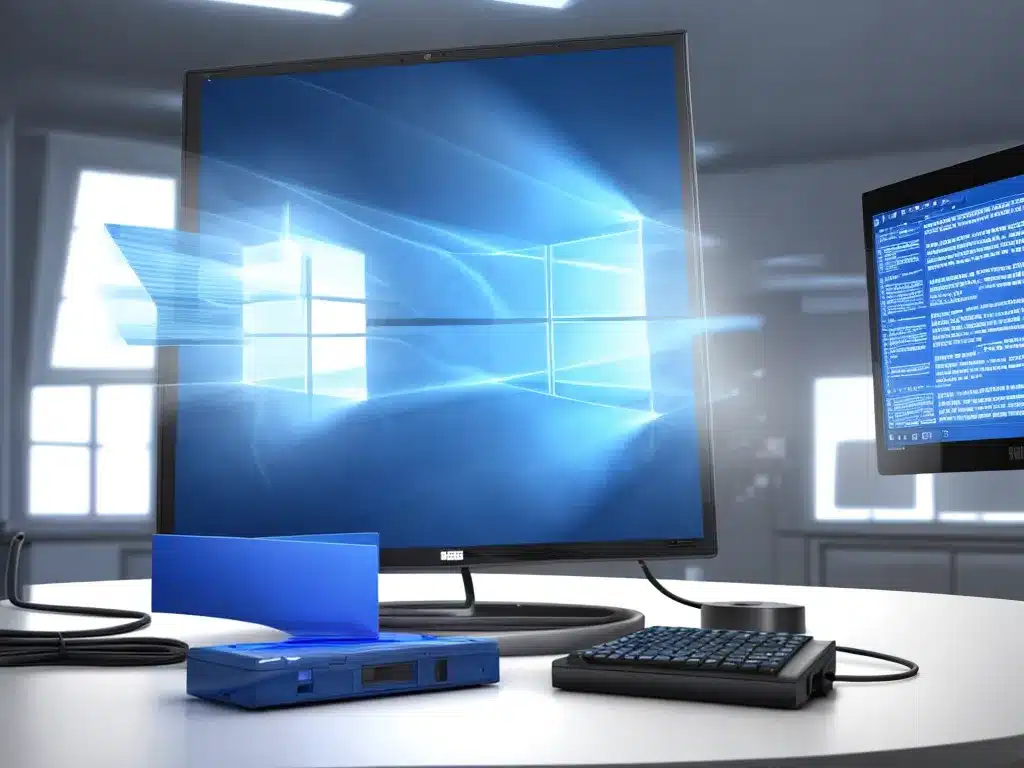
The dreaded blue screen of death – more formally known as a stop error or bug check – can be frustrating when it appears unexpectedly on your Windows computer. However, with some targeted troubleshooting, you can often resolve the underlying issue and get your PC back up and running smoothly. In this comprehensive guide, I’ll walk through the common causes of blue screen errors and provide fixes to help troubleshoot your specific situation.
What Causes the Blue Screen of Death?
The blue screen itself is caused by a critical error in the Windows operating system that forces your computer to shut down to prevent further damage. Potential causes include:
Hardware Issues
-
Faulty RAM modules – Bad RAM can cause a variety of crashes and blue screens. Running a RAM test can help identify errors. Reseating or replacing RAM may resolve the issue.
-
Overheating – Excessive heat causes system instability and crashes. Ensure proper airflow and that fans are running. Clean out dust. Reapply thermal paste on CPUs.
-
Failing hard drive – Hard drive errors can lead to critical system crashes. Check SMART status of the drive or run CHKDSK to check for problems. Replace failing drives.
-
Defective GPU – A malfunctioning graphics card can cause blue screen crashes. Test with a different GPU if available or reinstall drivers.
-
Loose connections – Make sure all internal cables and power connectors are securely attached. Reconnect anything loose.
Driver Issues
-
Outdated drivers – Using outdated drivers is a common cause of blue screens. Update all drivers, especially chipset, GPU, and storage drivers.
-
Incorrect drivers – Installing generic or incorrect drivers for hardware can lead to conflicts and crashes. Uninstall and reinstall latest manufacturer drivers.
-
Damaged drivers – Corrupted or damaged drivers need to be repaired with SFC or reinstalled fresh.
Software & OS Issues
-
System file corruption – Critical operating system files can become corrupted leading to crashes. Use SFC and DISM tools to repair system files.
-
Buggy software – Poorly programmed or incompatible apps can cause system instability. Uninstall problem software.
-
Viruses/malware – Infections from malware and viruses can often cause blue screen crashes. Scan with antivirus and malware tools.
-
Registry problems – Corrupted registry files can cause crashes. Try system file checker and registry cleaners.
-
Insufficient resources – Things like low disk space, memory leaks, or too many programs open can crash the OS.
Troubleshooting the Blue Screen
When encountering the blue screen of death, the key is to analyze the error details to pinpoint the failing component. Here are the general steps I take to troubleshoot these errors:
1. Examine error details
The blue screen contains an error name and short description. Search online to discover the cause and solutions for that specific stop code.
2. Check memory dumps
The MEMORY.DMP file contains debug information about the error. Debug with WinDbg or visualize with BlueScreenView. Identify drivers or processes causing the crash.
3. Check Event Viewer
Logs from Event Viewer can provide additional insight into issues leading up to the blue screen. Look for critical errors and warnings.
4. Test components individually
Run hardware diagnostics and stress tests on individual components like CPU, RAM, GPU, drives to pinpoint faults. Test in another PC if possible.
5. Attempt recovery options
Recovery tools like System Restore or Startup Repair can fix software issues by rolling back changes. Safe Mode helps determine if 3rd party apps cause problems.
Preventing Blue Screens
While occasional blue screens are inevitable, there are steps you can take to help avoid them in the future:
- Keep the OS, drivers, and applications updated
- Only install trusted software from reputable sources
- Install anti-virus and anti-malware tools and keep them updated
- Do not overload system resources by running too many demanding programs
- Maintain backups and recovery images in case of system failure
- Monitor system temps and health with tools like HWMonitor and CrystalDiskInfo
- Clear temporary files and run maintenance utilities like CCleaner
- Perform regular system scans with SFC and DISM
- Test components before upgrading or overclocking
By following best practices and applying the appropriate troubleshooting steps, you can quickly get to the bottom of most blue screen errors and restore normal operating system function. With some time and targeted effort, you can eliminate those frustrating crashes for good.












